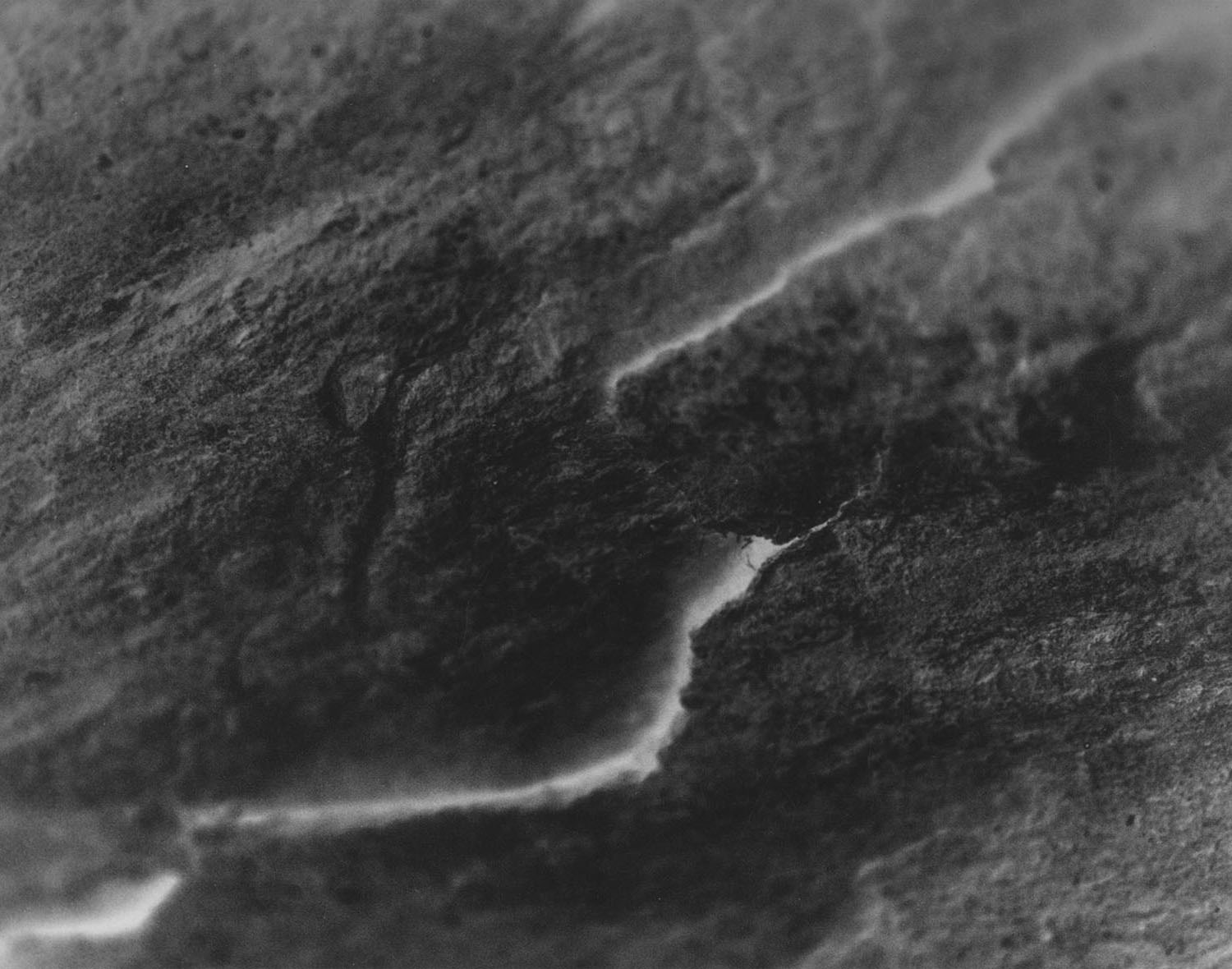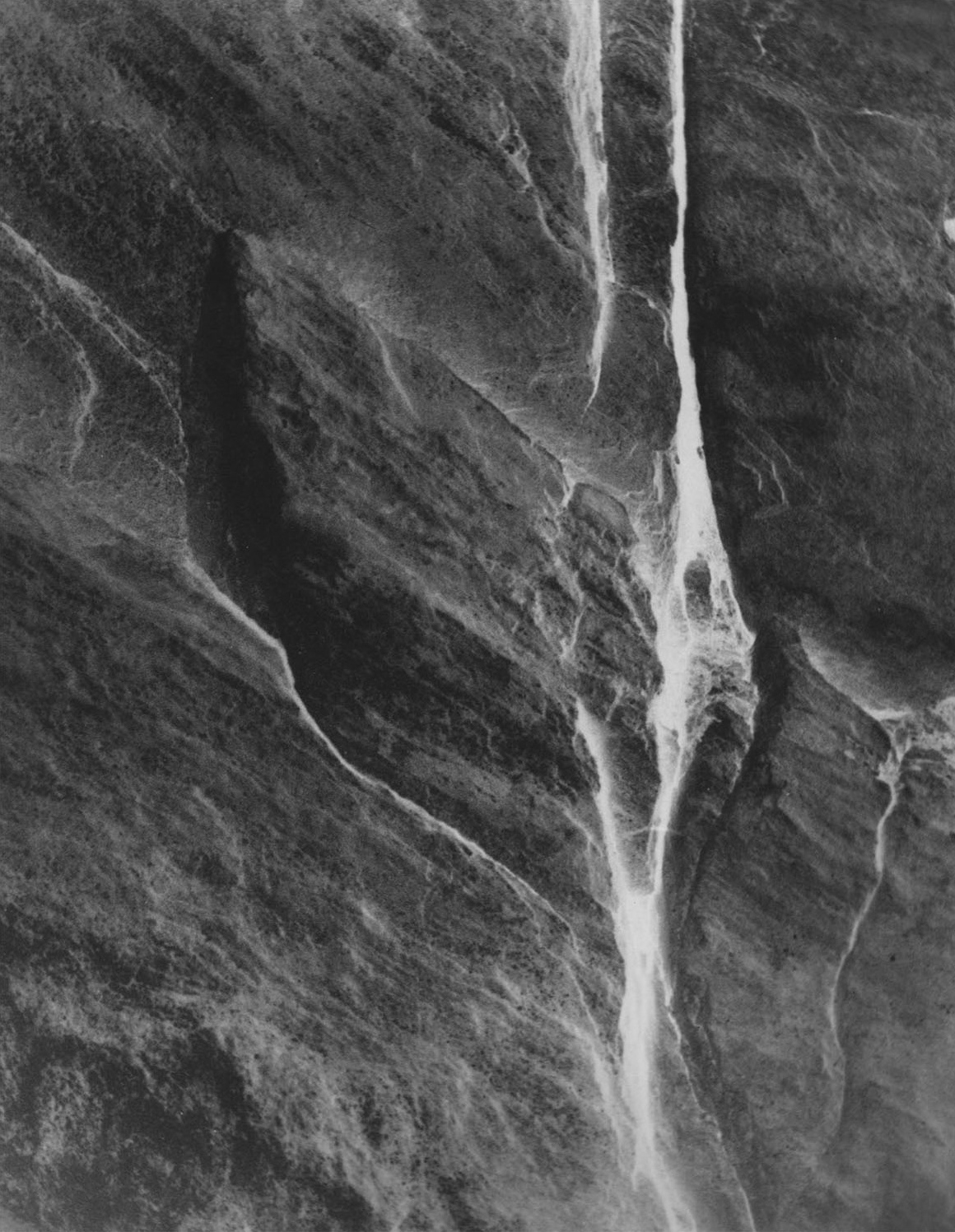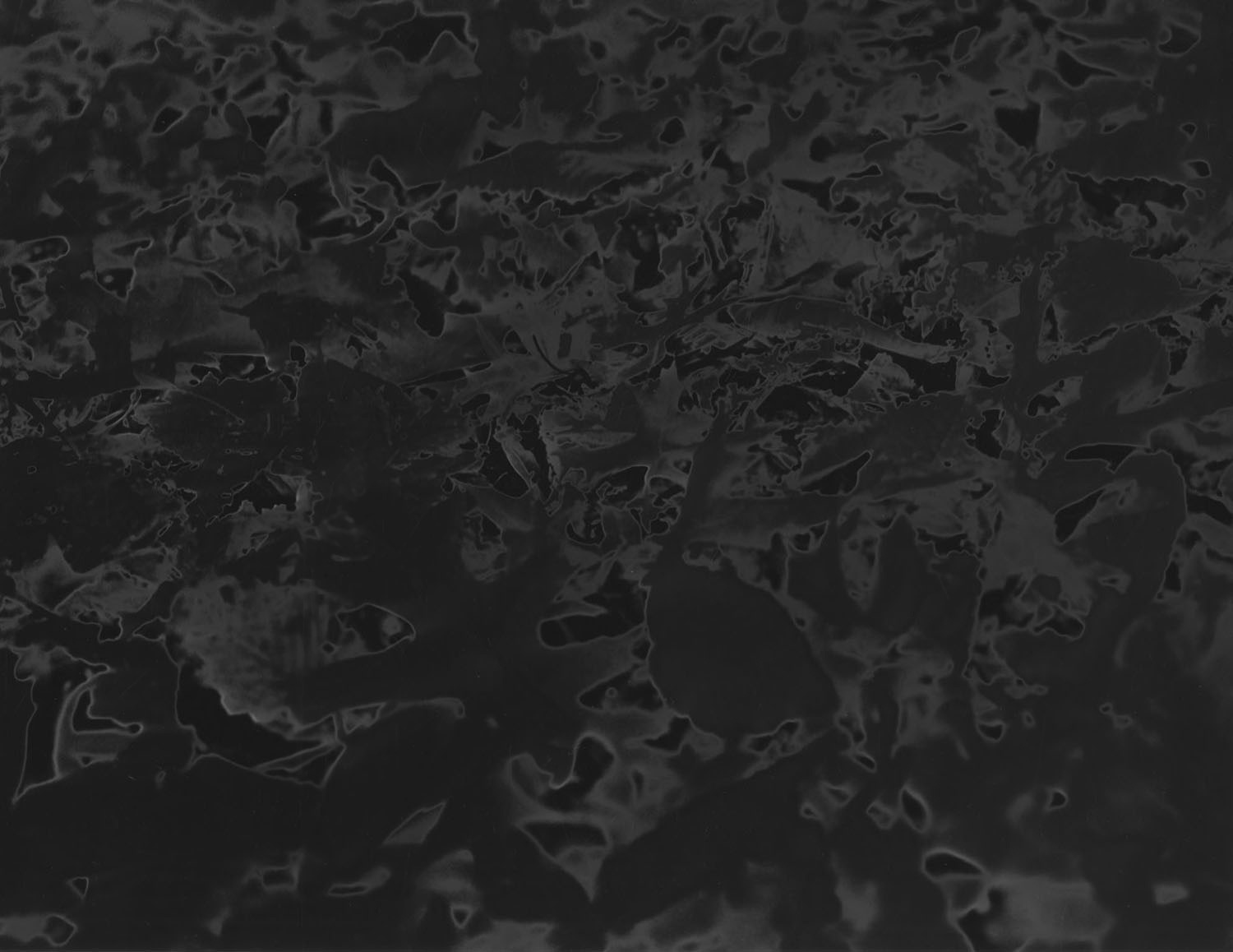




The camera lens is an extension of the eye. The photographic process, where light is captured through a lens and exposed on a light-sensitive material in order to create a representation of an image, is a mirror of the process that happens in the brain when light enters through the eye’s lens, enabling the human mind to create a representation of the material world. For the photographer, the camera becomes a third eye, capable of seeing in ways that the biological eye can’t. This series is a study on the relationship between the biological and the material; between mind, meaning, and materiality.
In these photos I utilized macro-photography to extend the field of vision of the human eye, in order to study the visual forms of physical matter like rocks, plants, and water. The exposures that result from this are then manipulated in the darkroom using the solarization and “push” processes to imbue the images of dead, physical matter with energy; in a sense, to give life.
The “push” process is a way to try to improve an underexposed image by over-developing it, in order to compensate for the lack of light. This process brings out the grain on the film’s emulsion, which yields images with very high contrast and a loss in detail. I utilized this process on this project in order to oversimplify the image (by loss of detail) and further abstractify the subject.
Solarization, also known as the Sabatier effect, is a photographic process that occurs when either film or photo paper are exposed to light half-way through the developing process, and is formally seen as a mistake. Solarization imbues the photographer’s carefully composed and calculated images with the randomness, vibrancy, play, risk, and disaster which is inherent in life. It is one of the ways in which the accidents of darkroom photography can be utilized for a specific visual effect.
The resulting images in this project bear a striking resemblance to the biological forms found in anatomy. Solarization and “pushing” can make the images look like vast deserts, great canyons, microscopic images of living cells, or images from space, even though the original exposures were actually representations of very tiny spaces; a reflection of how everything, no matter how big or small, is part of life.
The images in this series are meant to explore both the abstractness of everyday visual forms, and the relationship between the abstract and the representational. As the images are solarized and “pushed”, they are abstracted; freed from the visual signage which imposes meaning on them by defining them as representations of specific objects. Each word, each object has its own associated meaning and symbolism. To free images from their representational, and therefore their conceptual, signage, is to let the viewer construct their own meaning in pure freedom. The images serve no longer merely as a documentation of objects in the material world, but as a pure exploration of visual forms. They become objects of pure feeling; blank canvases for the mind of the viewer.